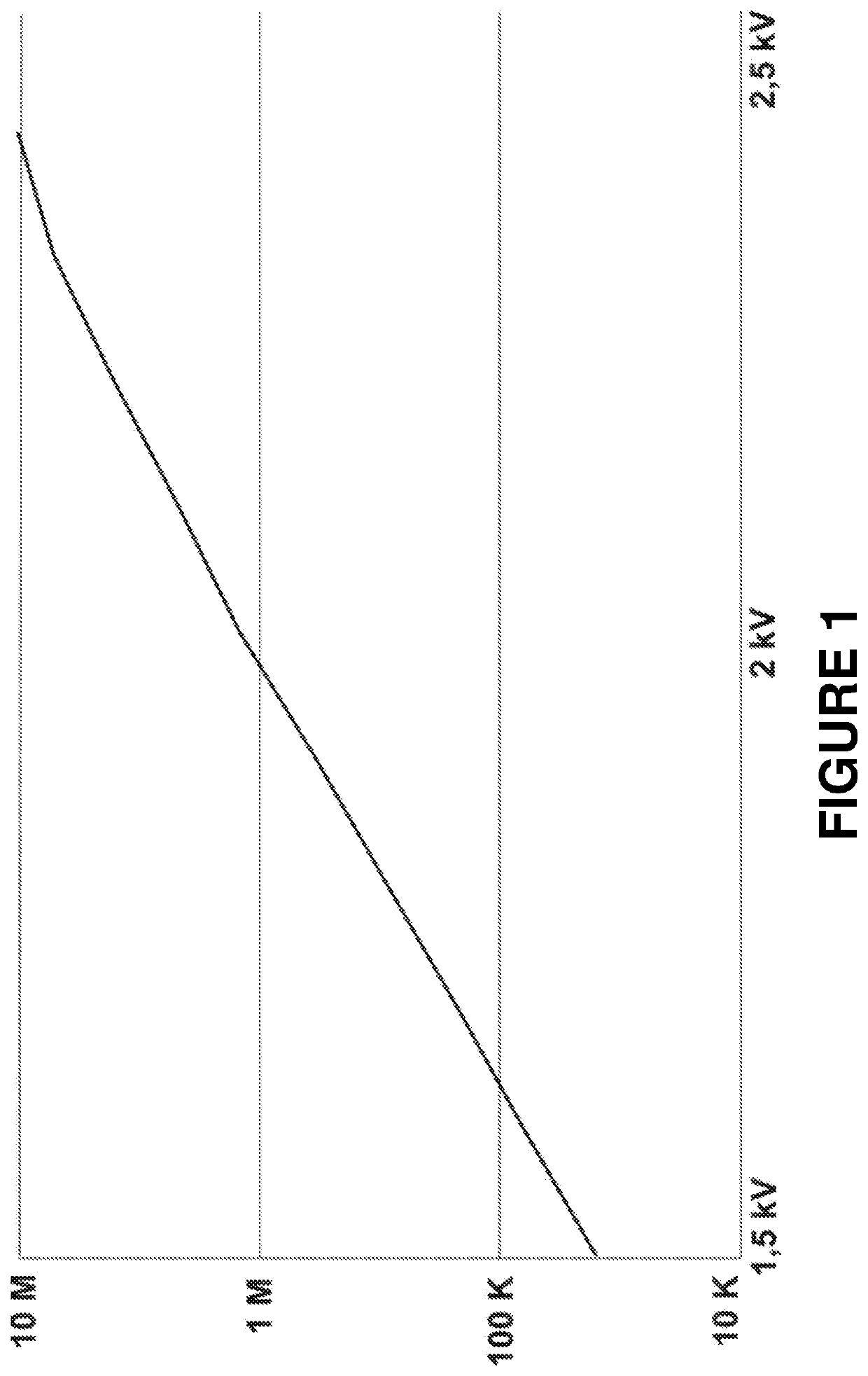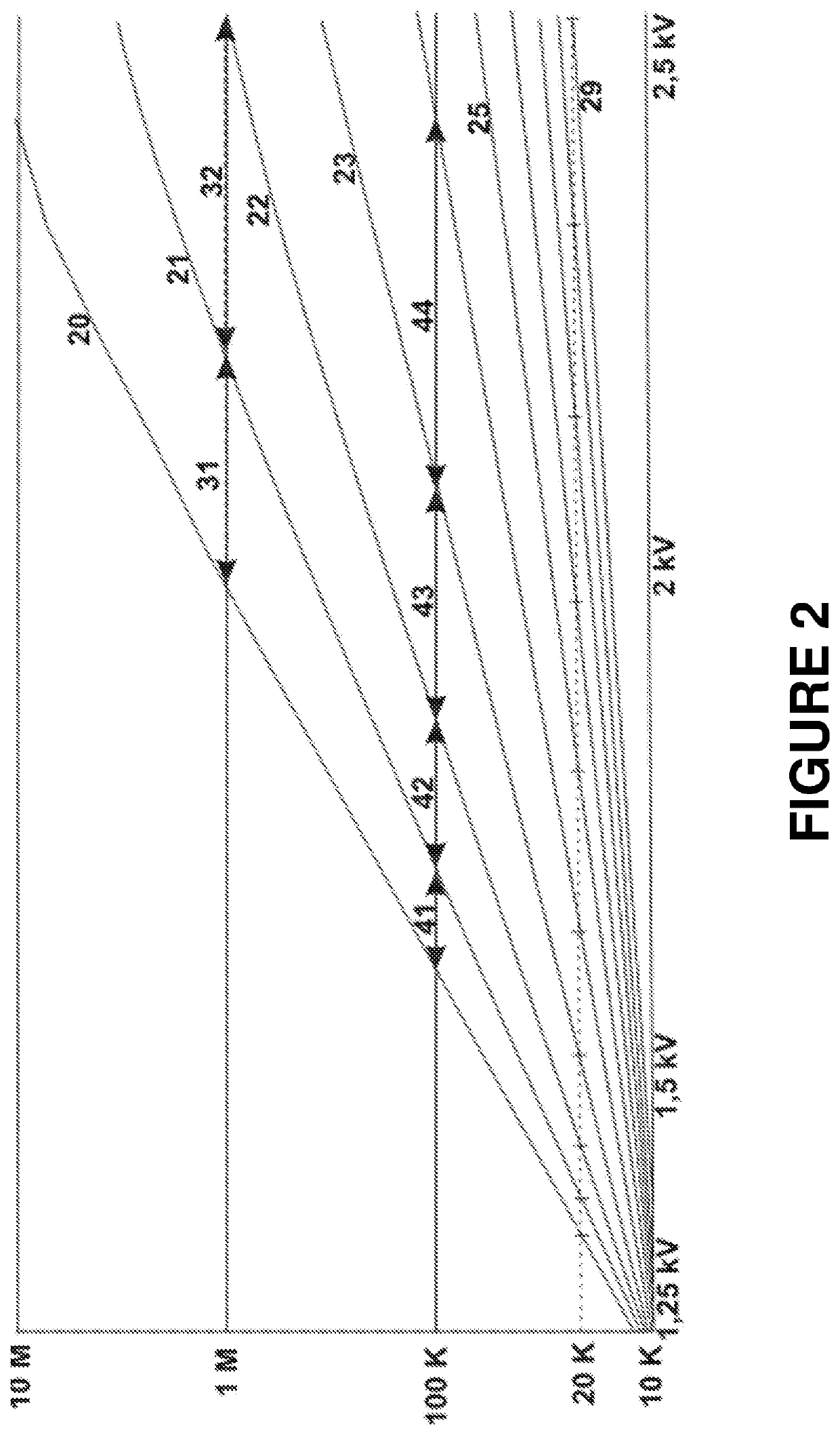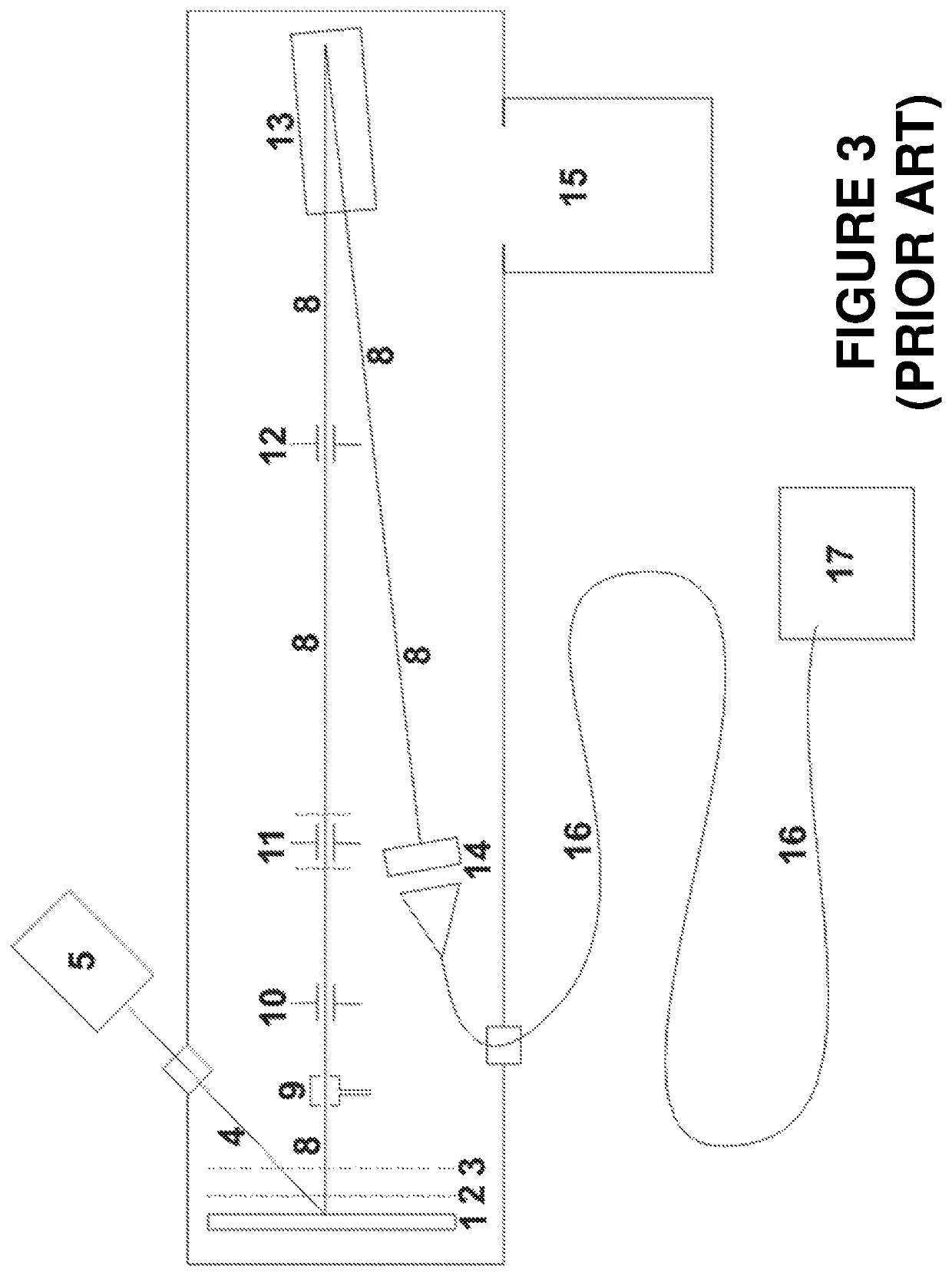Method of operating a secondary-electron multiplier in the ion detector of a mass spectrometer
a mass spectrometer and secondary electron technology, applied in the field of electronic incorporation of secondary electron multipliers, can solve the problems of insufficient pulse current of secondary electron generated by a single ion, and the noise of operating a preamplifier in a vacuum is particularly low, so as to improve the signal-to-noise ratio at the input of the digitizing unit, prolong the service life, and reduce the noise level
- Summary
- Abstract
- Description
- Claims
- Application Information
AI Technical Summary
Benefits of technology
Problems solved by technology
Method used
Image
Examples
Embodiment Construction
[0037]FIG. 2 is a theoretical representation, supported by measurements, of the group of characteristic curves (20) to (29) for the aging of a multiplier. The graph shows how each characteristic curve changes after specific operating periods of the same duration, for example after a period of around 100 operating hours in each case. The representation is based on two observations: (a) The aging occurs faster, the higher the amplification at which the SEM is operated. It is highly probable that this is because the greater number of secondary electrons which impinge at the end of the SEM causes a greater change in the work function of the active surface. (b) The SEM ages faster, the higher the operating voltage which must be set for a given amplification. This is probably because the energy of the impinging electrons is higher. A higher electron density and a higher electron energy accelerate the damage to the active surfaces, so lower yields of secondary electrons are achieved. If th...
PUM
 Login to View More
Login to View More Abstract
Description
Claims
Application Information
 Login to View More
Login to View More - R&D
- Intellectual Property
- Life Sciences
- Materials
- Tech Scout
- Unparalleled Data Quality
- Higher Quality Content
- 60% Fewer Hallucinations
Browse by: Latest US Patents, China's latest patents, Technical Efficacy Thesaurus, Application Domain, Technology Topic, Popular Technical Reports.
© 2025 PatSnap. All rights reserved.Legal|Privacy policy|Modern Slavery Act Transparency Statement|Sitemap|About US| Contact US: help@patsnap.com



